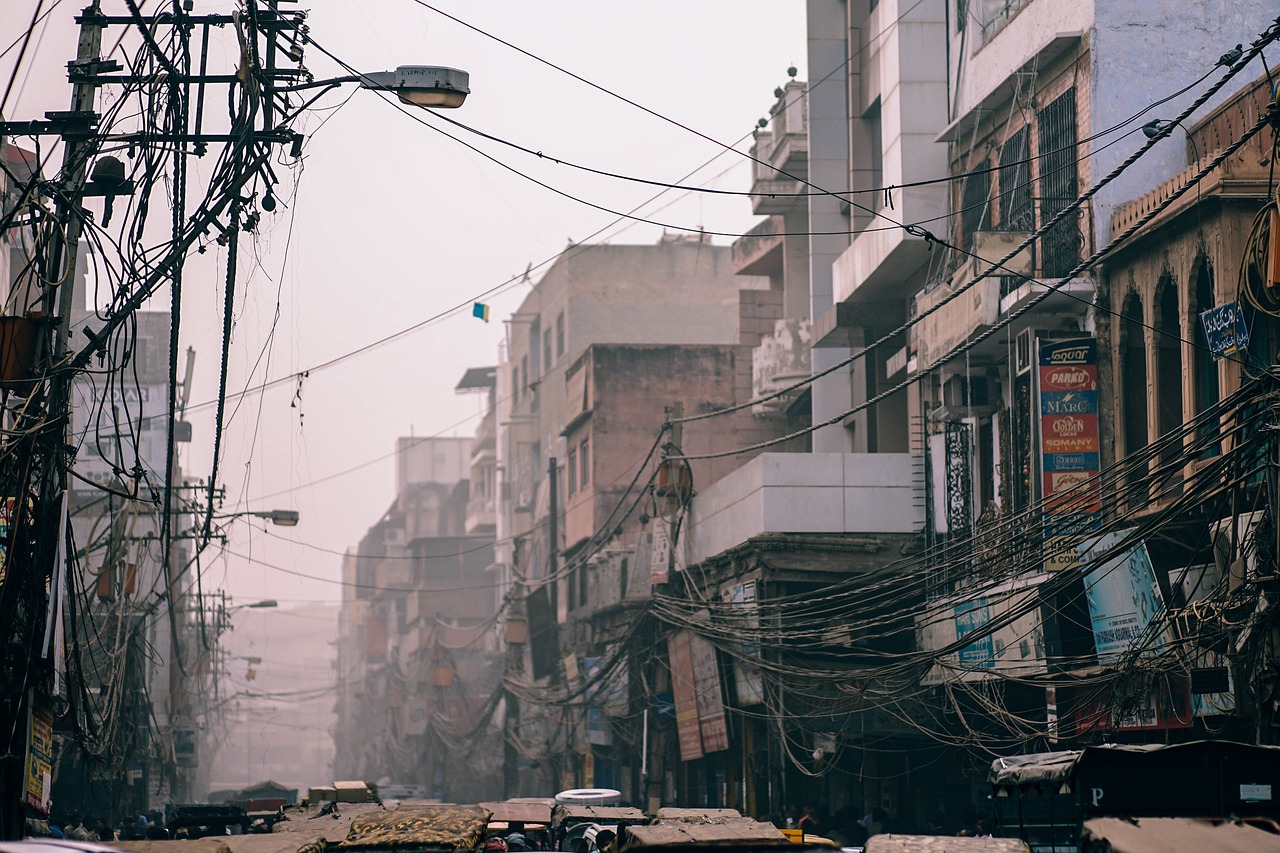Introduction
Nestled within the labyrinthine streets of Aleppo are the ancient marketplaces known as suqs. These bustling hubs of commerce and culture have been the lifeblood of the city for centuries, serving as epicenters of trade, interaction, and historical significance. In this article, we venture into the heart of Aleppo to explore the rich tapestry of its suqs and their enduring role in the city’s identity.
Amidst the labyrinthine streets of Aleppo lies a treasure trove of history and tradition—the ancient suqs. These vibrant marketplaces, pulsating with the rhythm of daily life, are not just commercial hubs; they are the very soul of the city. For centuries, they have stood as witnesses to Aleppo’s evolution, embodying the essence of trade, culture, and historical significance.
Stepping into the suqs is like embarking on a journey through time. Each cobblestone path, every archway, and the intricate architecture tell stories of a bygone era. These suqs are not just places of commerce; they are living museums, where the past and present harmoniously coexist.
The suqs of Aleppo have been the lifeblood of the city, serving as conduits for the exchange of goods and ideas. From spices to textiles, jewelry to pottery, the suqs have been where merchants from the East and West converged, creating a cultural crossroads that defined Aleppo’s cosmopolitan character.
But these suqs are more than just marketplaces; they are microcosms of society, where communities converge, friendships are forged, and traditions are passed down through generations. The air is thick with the scent of exotic spices, the chatter of bargaining, and the laughter of children playing amid the hustle and bustle.
While the suqs have witnessed the ebb and flow of history, including periods of conflict and turmoil, they have endured, a testament to Aleppo’s unwavering spirit. Today, they continue to thrive, serving as reminders of the city’s resilience and the importance of preserving its cultural heritage.
As we venture into the heart of Aleppo’s suqs, we are transported into a world where time stands still, and the echoes of the past reverberate in every corner. It’s a world where the vibrant colors of textiles, the intricate patterns of ceramics, and the warmth of hospitality converge to create an unforgettable sensory experience.
In exploring Aleppo’s suqs, we peel back the layers of history, culture, and tradition that have shaped the city’s identity. We are reminded that these marketplaces are not just places to buy and sell; they are the beating heart of Aleppo, where the city’s rich tapestry of history and diversity is woven into every thread of its existence.
You can also read more about this here: Australia’s Beale to savour wearing indigenous jersey | Reuters
The suqs of Aleppo are not just marketplaces; they are living embodiments of the city’s soul. These vibrant bazaars are where the city’s history, culture, and commerce converge. The hustle and bustle of daily life in the suqs reveal the enduring spirit of Aleppo.
The suqs of Aleppo represent a microcosm of the city’s soul and serve as a living testament to its resilience and cultural richness. These bustling bazaars have been at the heart of Aleppo’s identity for centuries, evolving and adapting while staying true to their historical essence. They are not mere marketplaces but dynamic spaces where the past and present intertwine.
As visitors weave through the narrow alleyways of the suqs, they embark on a sensory journey that encapsulates Aleppo’s diverse heritage. The aroma of exotic spices, the vibrant colors of textiles, and the cacophony of languages spoken by both locals and tourists create an atmosphere that transcends time. These suqs are more than just places of trade; they are where Aleppo’s history, culture, and commerce beautifully converge.
One can witness the enduring spirit of Aleppo in the daily life of the suqs. Shopkeepers, artisans, and shoppers interact in a dance that has been choreographed for centuries. The conversations, haggling, and shared laughter reflect the city’s warmth and the profound sense of community that has thrived here for generations.
These suqs have seen empires rise and fall, and they have adapted to the changing tides of history. From the Roman era to the Ottoman period and beyond, the suqs have remained steadfast. Even in the face of adversity, such as recent conflicts, the resilience of Aleppo’s people and their commitment to preserving their cultural heritage shine through.
The reopening and restoration of some suqs signal a hopeful chapter in Aleppo’s history. Efforts to safeguard these historical treasures underscore the city’s dedication to preserving its identity and welcoming visitors from around the world.
In essence, the suqs of Aleppo are not mere marketplaces; they are the living, breathing soul of the city. They stand as a testament to Aleppo’s unwavering spirit, its multiculturalism, and its commitment to honoring the past while embracing the future. The suqs are where the heart of Aleppo beats, and they will continue to do so for generations to come.
If you’d like to dive deeper into this subject, there’s more to discover on this page: A Shop of One’s Own

Aleppo’s suqs boast a legacy that stretches back millennia. Some, like the Souq al-Madina, date back over a thousand years. Over time, they have evolved, adapting to the changing needs of society while preserving their historical essence.
Aleppo’s suqs, those bustling marketplaces that have been the heartbeat of the city’s commerce and culture, carry a legacy that traverses the sands of time itself. Among these, the Souq al-Madina, a venerable institution, stands as a living testament to Aleppo’s mercantile heritage, with its roots extending back over a thousand years. As we wander through the alleys of these time-honored suqs, we step into a world where history and modernity dance in harmony.
A Millennium of Trade: Souq al-Madina and its counterparts have withstood the test of centuries. What began as humble trading posts have grown into expansive markets, where the flow of goods and ideas has shaped the city’s character. These suqs have seen empires rise and fall, and through it all, they have remained resilient, adapting to the needs of each era.
The Living Essence of Aleppo: These suqs aren’t just marketplaces; they are the lifeblood of Aleppo. Here, the pulse of the city beats, and the rich tapestry of its culture is woven. The merchants, artisans, and shoppers who populate these suqs contribute to an atmosphere that transcends commerce, creating a sense of community that binds generations together.
Adaptation and Tradition: Over the years, the suqs have gracefully evolved, embracing modernity while safeguarding tradition. The architecture of these markets, with their vaulted ceilings and intricate mosaics, harks back to an era when craftsmanship was revered. Yet, amidst the historical façades, you’ll find shops selling everything from spices to electronics, seamlessly blending tradition and progress.
Preserving the Heritage: Recent times have posed significant challenges to Aleppo and its beloved suqs, with conflict taking its toll. However, the city’s determination to preserve its heritage remains unshaken. Restoration efforts, supported by both local and international communities, are breathing new life into these historic marketplaces, ensuring that they continue to tell the story of Aleppo for generations to come.
Walking through Aleppo’s suqs is akin to taking a journey through time. It’s an immersion in history, a celebration of culture, and a testament to the resilience of a city and its people. These suqs are more than markets; they are the living soul of Aleppo, a place where the past mingles with the present, where the echoes of traders’ voices and the aroma of spices evoke the essence of this timeless city. As we traverse their labyrinthine paths, we honor not just the legacy of Aleppo but the enduring spirit of human commerce and connection that transcends borders and generations.
You can also read more about this here: Think Tank reports on the invasion of Ukraine – Consilium

The architectural beauty of Aleppo’s suqs is a testament to the city’s craftsmanship. Intricate arches, vaulted ceilings, and labyrinthine alleyways create a unique atmosphere that transports visitors to another era. The Grand Serail, an Ottoman-era structure, stands as a prime example of this architectural grandeur.
The suqs of Aleppo stand as magnificent showcases of the city’s unparalleled craftsmanship and architectural finesse. These bustling marketplaces are not merely centers of commerce; they are living galleries of artistry and history, where every stone, arch, and vault whispers tales of a bygone era.
As one ventures through the suqs of Aleppo, it becomes evident that the city’s artisans possessed an extraordinary mastery of their craft. The intricate arches that adorn the suq entrances are nothing short of architectural marvels, bearing witness to the meticulous attention to detail that defined Aleppo’s builders. These arches, often embellished with delicate Islamic motifs, are portals to another world—a world where time seems to slow, and the past seamlessly melds with the present.
The suq’s vaulted ceilings are a testament to the ingenuity of Aleppo’s architects. These graceful arches stretch overhead, creating a sense of grandeur that is both awe-inspiring and humbling. The interplay of light and shadow across these vaults adds a mesmerizing depth to the suqs, casting an enchanting spell over all who wander beneath them.
Navigating the labyrinthine alleyways of Aleppo’s suqs is an adventure in itself. These narrow passages, seemingly designed to confound and intrigue, lead visitors on a journey of discovery. Each turn reveals new treasures—exquisite textiles, aromatic spices, gleaming metalwork, and a symphony of colors and scents that awaken the senses.
Amidst this architectural splendor, the Grand Serail stands as a crowning jewel of Aleppo’s heritage. This Ottoman-era masterpiece, with its majestic domes and intricate façade, embodies the city’s grandeur during this period. It served as a symbol of power and governance, a reflection of Aleppo’s role as a pivotal center within the Ottoman Empire.
In conclusion, Aleppo’s suqs and architectural treasures are not mere structures; they are living testaments to the city’s enduring spirit and cultural richness. The beauty and craftsmanship found within these bustling marketplaces are a celebration of Aleppo’s past, a testament to the skill and artistry of its people, and an invitation for all to immerse themselves in the enchanting tapestry of history and heritage that defines this remarkable city.
To expand your knowledge on this subject, make sure to read on at this location: History of violence: Aleppo has been fought over for millennia and …

Within the suqs, one can find an astonishing array of goods, from spices and textiles to jewelry and antiques. The Souq al-Attarine specializes in fragrances and spices, while the Souq al-Halwani is renowned for its sweets. The variety of items on display is a testament to Aleppo’s historical role as a trading crossroads.
“Stepping into Aleppo’s bustling suqs is like entering a treasure trove of wonders, a sensory immersion into a world where time-honored traditions and commerce converge. The array of goods on display is nothing short of astonishing, a testament to Aleppo’s enduring legacy as a trading crossroads.
In the Souq al-Attarine, the air is redolent with the intoxicating aromas of spices and fragrances. Here, merchants offer a kaleidoscope of scents, from the heady allure of saffron to the earthy richness of cumin. It’s a place where the past mingles with the present, where the essence of ancient trade wafts through the air, inviting you to explore its myriad delights.
Wandering through the Souq al-Halwani is a journey into the world of sweetness. This is a place where artisans craft delectable sweets that are both an art form and a treat for the taste buds. Syrup-drenched baklava, fragrant rosewater-infused delights, and the rich, nutty notes of Aleppo’s famous nougat are just a few of the confections that beckon from the stalls. It’s a testament to the city’s commitment to culinary craftsmanship.
The variety of goods that grace these suqs is a living testament to Aleppo’s historical role as a trading hub. It’s a place where goods from distant lands find a common marketplace, where cultures converge in a symphony of colors, textures, and flavors. The suqs of Aleppo are not just marketplaces; they are living repositories of tradition and heritage, where the spirit of commerce and culture continue to thrive.
As you navigate the labyrinthine alleys and haggle with merchants, you become part of a tradition that stretches back centuries—a tradition of exchange, of discovery, and of savoring the rich tapestry of human civilization.”
Additionally, you can find further information on this topic by visiting this page: Think Tank reports on the invasion of Ukraine – Consilium

Throughout history, Aleppo has been a meeting point for different cultures, and its suqs reflect this diversity. Visitors can hear different languages, see various dress styles, and savor culinary delights from across the Middle East. The suqs are a microcosm of Aleppo’s multiculturalism.
Aleppo, steeped in the sands of time and the crossroads of civilizations, has woven a tapestry of diversity that is vividly on display within its bustling suqs. These labyrinthine markets are more than just places of commerce; they are living narratives of Aleppo’s historic role as a melting pot of cultures, where the echoes of different civilizations harmonize in a vibrant symphony of life.
A Babble of Languages: Strolling through Aleppo’s suqs is like embarking on a linguistic journey. Here, one can hear a medley of languages, from Arabic and Kurdish to Armenian and French. The suqs are not just marketplaces; they are linguistic crossroads where the chatter of different tongues creates a harmonious blend of voices, a reflection of the city’s cosmopolitan spirit.
Fashion and Attire: The suqs are also a visual feast, where the attire of passersby is a living testament to Aleppo’s cultural diversity. Traditional dress styles from various ethnic and religious communities intermingle, creating a kaleidoscope of colors and fabrics. It’s a place where fashion becomes a cultural expression, and the diversity of attire tells the story of Aleppo’s rich history.
Culinary Adventures: The aroma of spices and the sizzle of grills beckon visitors to explore Aleppo’s culinary heritage within the suqs. Here, the flavors of the Middle East come to life, with each stall offering a gastronomic adventure. From succulent kebabs to aromatic pastries, the suqs are a fusion of tastes and aromas that embody Aleppo’s culinary multiculturalism.
Multicultural Microcosm: Aleppo’s suqs are more than just marketplaces; they are microcosms of multiculturalism. In these bustling alleys, merchants from different backgrounds have plied their trades for centuries, forging connections that transcend borders and religions. The suqs are a testament to the human capacity to coexist, trade, and thrive in a diverse and harmonious environment.
Today, as Aleppo rebuilds and rejuvenates its historic heart, its suqs remain as vibrant as ever. They are not only places of commerce but also spaces where the past and present converge. The suqs invite us to celebrate the beauty of diversity, to savor the flavors of multiculturalism, and to appreciate the rich tapestry of human history that continues to unfold within their bustling lanes.
Aleppo’s suqs are a living embodiment of the city’s enduring spirit, where cultures meet, languages mingle, and traditions thrive. They beckon us to embrace the values of tolerance, coexistence, and appreciation for the myriad threads that make up the fabric of Aleppo’s multicultural identity.
Explore this link for a more extensive examination of the topic: History of violence: Aleppo has been fought over for millennia and …

In recent years, Aleppo’s suqs have faced significant challenges, including damage from conflict. However, the resilience of the city and its people has led to restoration efforts to revive these important cultural and economic centers. The reopening of some suqs symbolizes a hopeful chapter in Aleppo’s history.
In the wake of conflict and adversity, Aleppo’s suqs, once vibrant marketplaces, faced unprecedented challenges. The scars of conflict left physical and emotional wounds on these historic centers. Yet, amidst the rubble and remnants of a tumultuous past, the city and its resilient people embarked on a journey of restoration.
The restoration efforts that have taken root in recent years are a testament to Aleppo’s unwavering commitment to preserving its cultural and economic heritage. The suqs, which bore witness to centuries of trade and exchange, were not to be forgotten. They were a living testament to the city’s enduring spirit.
Step by step, brick by brick, Aleppo’s residents and passionate advocates of heritage preservation worked tirelessly to breathe life back into these once-thriving centers of commerce. The painstaking process of rehabilitation involved not just rebuilding physical structures but also rekindling the spirit of the suqs.
The reopening of some suqs marks a poignant and hopeful chapter in Aleppo’s history. It is a testament to the resilience of a city that refuses to be defined solely by its challenges. The revitalized suqs are more than just marketplaces; they are symbols of renewal and rejuvenation.
As the shopkeepers return and the alleys once again bustle with activity, Aleppo’s suqs are on the path to reclaiming their rightful place as cultural and economic hubs. They stand as beacons of hope, reminding us that even in the face of adversity, the human spirit can prevail, and history can be rewritten.
The story of Aleppo’s suqs is not just one of restoration; it is a testament to the enduring power of heritage and the indomitable will of a city and its people. It is a story of hope, resilience, and the unwavering belief in the importance of preserving our shared cultural legacy.
If you’d like to dive deeper into this subject, there’s more to discover on this page: Weapons-of-Mass-Distraction-Foreign-State-Sponsored …

In recognition of their historical significance, Aleppo’s suqs were designated a UNESCO World Heritage Site in 1986. This acknowledgment highlights their importance not only to Aleppo but to the world as cultural treasures worth preserving.
The designation of Aleppo’s suqs as a UNESCO World Heritage Site in 1986 was a momentous acknowledgment of their historical significance and their enduring importance to the cultural heritage of humanity. This prestigious recognition shines a global spotlight on these ancient marketplaces, underscoring their status as invaluable cultural treasures that demand preservation and appreciation:
Custodians of History: Aleppo’s suqs are custodians of history, where the stories of countless generations have unfolded. The UNESCO designation reinforces their role as living witnesses to the past, preserving the traditions, trade, and interactions that have shaped the city’s identity.
Architectural Marvels: Beyond their historical importance, Aleppo’s suqs are architectural marvels, with their labyrinthine alleys, vaulted ceilings, and intricate facades. This recognition serves as a tribute to the skill and craftsmanship of the builders who created these timeless structures.
Cultural Crossroads: Aleppo’s suqs have long served as cultural crossroads where diverse communities converged. The UNESCO designation underscores their role as bridges between cultures, fostering understanding and dialogue through the exchange of goods, ideas, and traditions.
Global Responsibility: The recognition as a World Heritage Site places a global responsibility on the shoulders of Aleppo’s residents and authorities to ensure the suqs’ preservation for future generations. It’s a commitment to safeguarding the tangible and intangible heritage contained within their walls.
Touristic Attraction: As UNESCO World Heritage Sites, Aleppo’s suqs draw tourists and scholars from around the world. This influx of visitors not only supports local economies but also fosters cultural exchange, turning Aleppo into a global meeting point where people from diverse backgrounds come together to appreciate its historical riches.
Educational Resources: The suqs’ UNESCO status transforms them into invaluable educational resources. Schools, universities, and cultural institutions can use these sites to teach history, architecture, and cultural studies, fostering a deeper understanding of Aleppo’s role in the tapestry of human civilization.
Ongoing Preservation: The UNESCO designation encourages ongoing efforts to preserve and restore Aleppo’s suqs, ensuring that they continue to stand as beacons of history and culture. These efforts include maintaining their architectural integrity and safeguarding the traditions that have thrived within their walls.
In summary, the UNESCO World Heritage Site status bestowed upon Aleppo’s suqs is a testament to their universal value as repositories of history, culture, and architectural excellence. It emphasizes their role as not just local treasures but as global assets that enrich our collective understanding of the world’s diverse heritage. The responsibility to protect and cherish these cultural gems resonates far beyond Aleppo, signifying a shared commitment to preserving the tapestry of human history for generations to come.
To expand your knowledge on this subject, make sure to read on at this location: Country Reports on Terrorism 2019 – United States Department of …

Conclusion
In conclusion, Aleppo’s suqs are not mere marketplaces; they are living witnesses to the city’s history, culture, and resilience. As Aleppo continues to rebuild and preserve its heritage, the suqs remain central to its identity, serving as bridges between the past and the future. They are a testament to the enduring spirit of Aleppo and its commitment to preserving the rich tapestry of its history and heritage.
In conclusion, the suqs of Aleppo transcend their status as mere marketplaces; they are living witnesses to the city’s remarkable journey through history. With every cobblestone and archway, they tell stories of Aleppo’s past, its vibrant culture, and its indomitable spirit.
As Aleppo perseveres in its mission to rebuild and safeguard its heritage, the suqs stand as steadfast sentinels of the city’s identity. They are not relics frozen in time but vibrant hubs where the past and future intersect. These marketplaces are bridges that connect generations, where traditions are preserved, and where history lives on.
The suqs are a testament to Aleppo’s enduring spirit, its ability to rise from the ashes of adversity, and its unwavering commitment to preserving the rich tapestry of its history and heritage. They embody the resilience of a city that refuses to let its legacy be erased, and they invite us all to be part of Aleppo’s ongoing story, where the echoes of the past guide the way toward a vibrant and culturally rich future.
Don’t stop here; you can continue your exploration by following this link for more details: Regulation (EU) No 1308/2013 of the European Parliament and of …
More links
To expand your knowledge on this subject, make sure to read on at this location: Trade and Commercial Activity in the Byzantine and Early Islamic …
